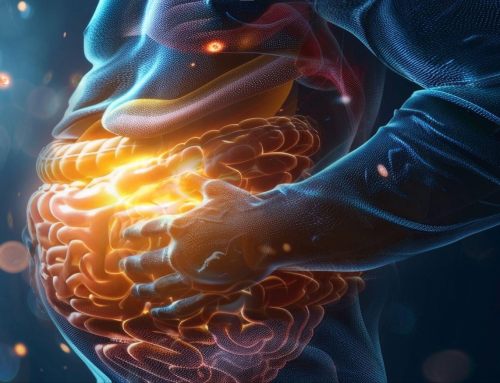The Connection Between Endocrine Function & Metabolic Disorders/Obesity
The prevalence of obesity and metabolic disorders has dramatically increased in recent years, making these conditions public health concerns (1). Interestingly, the endocrine system governs key processes in the brain and body, playing a robust role in metabolic health.
Multifactorial Lens & Etiology of Metabolic Disorders
Metabolism refers to the synthesis, utilization, and storage of energy (ATP) in cells required for growth, repair of tissues, and maintenance of countless daily functions for the body and brain. This process is compromised in metabolic disorders. Hormones have immersive, dynamic, and intricate functions in metabolic health, impacting the growth of cells, regulation of feeding behaviors, genetic expression, and body composition, among other various integral factors.
Metabolic health encompasses homeostatic regulation of the body’s physiological processes. Metabolic syndrome refers to a cluster of factors, including obesity, dyslipidemia, hyperglycemia, and hypertension, conferring risk for cardiovascular disease and stroke (1). These disorders are suggested to result from a combination of genetic, biochemical individuality, environmental, and lifestyle factors.
Inflammation plays a role in the etiology of metabolic disorders, as well as impeded endocrine functioning. It is a natural response to endogenous and exogenous forms of stressors induced in the body. Inflammation results in impeded metabolic health by disrupting the functioning of insulin and lipid metabolism while increasing visceral fat. In addition to obesity and metabolic syndrome, inflammation contributes to the development of type 2 diabetes. Systemic inflammation may also induce dysbiosis, a lack of beneficial diversity in the gut. This can lead to intestinal permeability while further contributing to metabolic distress and inflammation in the body.
A Closer Look At Genes
Genetics do play a role in metabolic disorders and obesity. This has been illustrated in twin and family studies, demonstrating an increased risk of childhood obesity with a family history. Among twins, heritability for obesity is suggested to be 75% in dizygotic twins vs. 40% among monozygotic, further underscoring the role of genetics (2).
Many genetic variants have been shown to increase susceptibility to weight gain and obesity including leptin (LEP), the leptin receptor (LEPR), the melanocortin 4 receptor (MC4R), single-minded homolog 1 (SIM1), proopiomelanocortin (POMC), prohormone convertase 1 (PCSK1), brain-derived neurotrophic factor (BDNF), the neurotrophic tyrosine kinase receptor type 2 gene (NTRK2) and the Fat Mass and Obesity (FTO) gene, as indicated by advances in genetic testing.
However, genetics alone do not account for the increase in obesity rates in recent years, suggesting that lifestyle and environmental factors also play a significant role in etiology.
An Intricate & Complex Interplay – Metabolic Health & Endocrine Function
Encompassing an intricate network of glands that produce and release hormones related to energy production, utilization, and storage—to eating behaviors—efficient signaling pathways within the endocrine system are integral in regulating metabolism.
Alterations in endocrine functioning have been implicated in obesity— including increased adipose tissue and leptin secretion—as well as a reduction in ghrelin secretion. Insulin resistance and disruptions in hormonal signaling have also been well-documented in obesity and metabolic disorders, including PCOS and diabetes (3).
Nutrition, exercise, sleep, and stress modification also play roles in these conditions, with the potential to support weight management, modulate inflammation, and govern hormonal balance (4).
Hormones, Pathways, & Their Relationship to Metabolism
When released from one location in the body, hormones exert significant influence over various far-reaching processes in the body, with vast effects.
1. Insulin – Produced by the pancreas, insulin is a key hormone involved in metabolism and regulating blood sugar levels. Insulin is necessary to support absorption of glucose from the bloodstream. Imbalances in insulin production and sensitivity are prevalent in metabolic disorders. Insulin resistance results in high levels of circulating insulin in the bloodstream, and is associated with obesity, diabetes, and metabolic syndrome.
2. Leptin: The Satiety Hormone – Leptin is produced by adipose cells and acts on the hypothalamus, modulating appetite and metabolism. Those with compromised metabolism do not respond efficiently to leptin signaling, resulting in resistance to leptin. This causes an increase in appetite and reduced energy expenditure, contributing to overall impeded metabolic health.
3. Ghrelin – Synthesized in the stomach, ghrelin is an integral gut peptide that stimulates appetite in the hypothalamus. It is involved in peripheral metabolism, blood sugar regulation, and overall regulation of hedonic mechanisms that modulate appetite and food intake.
4. Hormonal & Neural Systems – Several other important hormones and signaling pathways are involved in metabolism and endocrine health. Dysregulation amongst these pathways can also contribute to the development of metabolic disorders and obesity.
5. Hyperactivation of the HPA Axis – Endocrine functioning plays a crucial role in influencing eating behaviors and obesity. The endocrine system works in conjunction with the nervous and immune systems to modulate appetite, metabolism, and food intake. Research highlights a strong relationship between activation of the hypothalamus-pituitary-adrenal (HPA) axis and energy homeostasis, stress, cortisol, and obesity (5). Emerging evidence suggests that cortisol plays a mediating role in these conditions.
Chronic stress can lead to dysregulation of cortisol and other stress hormones, which can contribute to weight gain via reduced energy expenditure and obesity (5). Individuals with abdominal obesity have been found to have elevated cortisol levels, further underscoring this relationship. Stress can also impede gut functioning, further driving these symptoms.
6. Cholecystokinin (CCK) is a peptide hormone implicated in hunger cues and is synthesized in the gut following consumption of food, with further effects on obesity and glucose metabolism (6).
7. Thyroid hormone, growth hormone, and other related pathways also contribute to these conditions. Neurons in the hypothalamus release these hormones, playing roles in energy utilization and production. Thyroid hormones, in particular, influence metabolism by modulating cellular respiration and thermogenesis, as well as governing resting metabolic rate.
A complex relationship exists between the thyroid axis and adiposity. Triiodothyronine impacts lipid turnover in adipocytes and influences appetite regulation via the central nervous system (7). Subclinical hypothyroidism has been shown to induce changes in metabolic rate while also increasing BMI. Sufficient levels of thyroid-stimulating hormone (TSH) have been indicated to suppress appetite and modulate lipid storage through lipolysis and lipogenesis control, also influencing thermogenesis.
This underscores the role of sufficient thyroid hormone production in metabolic health. Obesity can also affect the thyroid through mechanisms of lipotoxicity and alterations in adipokines and inflammatory cytokine production.
8. Sex Hormones – Androgens, estrogens, and progestogens also play integral roles in metabolism, related physiology, and behavior. These hormones trigger a number of cellular and molecular mechanisms throughout the body. The interaction between sex hormones and gut microbiota has also been explored relative to the development of metabolic health conditions and the gut-brain axis, inflammatory cytokines, and gut barrier integrity have been identified mechanisms (8).
9. Endocannabinoid System (ECS) – Endocannabinoids are also involved in metabolism. The ECS comprises cannabinoid 1 (CB1) and cannabinoid 2 (CB2) receptors that are abundantly present in the body, with significant concentrations found in the brain and immune system. The ECS has been explored as a potential therapeutic approach in preventing obesity due to its role in regulating hunger via stimulation of CB1 receptors in the GI tract, adipose tissue, liver, and muscle, contributing to improved metabolic functioning. Whereas CB2 receptors have been suggested to exert anti-inflammatory and anti-obesity effects (9).
The Microbiome – A Key Epicenter of Health
Neural pathways via the gut also influence endocrine function and metabolism by modulating hormones and neurotransmitters relative to feeding behavior (10). Alterations in gut microbiota and their associated metabolites contribute to obesity, and metabolic disorders, as well as hormonal imbalances.
Specific microbiota and their derived metabolites (including short-chain fatty acids and amino acids, among others) are also shown to modulate ghrelin receptor signaling. Microbial diversity has been found to be significantly decreased in obesity, while the Firmicutes/Bacteroidetes ratio has been indicated to be significantly increased. The gut microbiome, therefore, represents an important epicenter in governing gut peptide secretion that could have promising roles in obesity, metabolic, and endocrine health (11).
Disruptions in Energy Homeostasis
Stress, insufficient sleep, and diet can all impede gut functioning and microbiota composition. Highly processed foods– such as emulsifiers– affect the mucosal lining of the gut and signaling pathways such as CCK. This leads to altered intestinal permeability and inflammation, all of which can wreak havoc on metabolic and hormonal health (11).
Environmental Factors – The Role of Obesogens
Environmental toxins can greatly harm metabolic and hormonal health. Obesogens are endocrine disrupting chemicals that interfere with normal endocrine regulation of metabolism. The effects of obesogens are strongly associated with obesity (12). Toxins from the environment that impede systemic health include thousands of new chemicals and additives from foods, heavy metals, medications, pesticides, benzene, and air pollution, among others (13). The exposome refers to the accumulation of these exposures and the imprint they have on cellular health (14).
Altered hormonal signaling, coupled with increased reactive oxygen species (ROS) induced by obesogens, results in an increase in metabolic changes observed in obesity. Increased insulin secretion, serum lipids, non-alcoholic fatty liver disease (NAFLD), altered microbiome, inflammation, body composition, and adipocyte number, size, and function are all observed effects (15).
A number of systematic reviews and meta-analyses illustrate the relationship between environmental chemicals and obesity (15-18). The effects of obesogens vary depending on genetics, lifestyle factors, biochemical individuality, and stress. Obesogens modify processes that result in increased susceptibility to weight gain across the lifespan, underscoring their potent effects (19).
Fecal microbiota transplant (FMT) studies suggest that this may be a promising approach to metabolic conditions associated with obesity. A recent meta-analysis supports FMT in improving metabolic health— such as glycemic control and weight loss (20), further highlighting the importance of the gut microbiome in supporting these conditions.
Cultivate Systemic Balance with Lifestyle
Lifestyle factors such as poor diet, sedentary lifestyle, compromised sleep, and stress can all compromise endocrine function and contribute to the development of obesity. Furthermore, ROS from exposome factors can alter metabolic signaling, and induce inflammation in the system, further contributing to impeded metabolic and endocrine health. A diet high in processed foods, refined carbohydrates, and additives can result in gut microbiota and hormonal imbalances, insulin resistance, and dysregulation of other hormones involved in metabolism and feeding behaviors. Finally, high-fat diets can lead to obesity and meta-inflammation, which can contribute to neuroinflammation, further wreaking havoc in gut, hormonal, and metabolic signaling pathways (21).
In contrast, an anti-inflammatory diet rich in omega-3 fatty acids, whole, nutrient-dense foods that support micronutrients for thyroid health (such as selenium found in brazil nuts and iodine from seaweed) and the gut microbiome (plant compounds) promotes balance within these systems. Loading up on natural sources of antioxidants while being mindful to avoid environmental toxins is also important in modulating these important regulatory aspects of health.
Synchronize Circadian Rhythm
Sleep is essential for metabolic health and endocrine function. Compromised sleep disrupts hormonal and neurotransmitter signaling pathways, microbiota balance, and circadian rhythm. A growing body of research suggests that altered circadian rhythm plays a role in impacting both hormonal and metabolic health. Hormones, including cortisol, leptin, ghrelin, and growth hormone, are all associated with impeded sleep and disrupted circadian rhythm. Sleep disturbances are associated with an increased risk of metabolic disorders such as diabetes, obesity, and insulin resistance, while also causing dysregulation of the hormones leptin and ghrelin. (22, 23).
Circadian dysfunction has been further shown to have bidirectional relationships with nearly all metabolic processes while inducing inflammation, such as increased C-reactive protein (CRP), interleukin-6 (IL-6), and oxidative stress in the system (24). This underscores the importance of synchronizing circadian rhythm to modulate metabolic and endocrine function. Obtaining adequate sunlight in the morning while also reducing exposure to artificial light at night and maintaining regular sleep-wake cycles are ways of supporting circadian rhythm balance.
Endocrine Function Is Integral for Metabolic Health
The endocrine system plays a significant role in the development of metabolic disorders and obesity. Adipocyte development is controlled by hormones which are essential for modulating metabolism and feeding behavior. Hormones and signaling pathways support modulation of metabolism, appetite, and fat storage, and their dysregulation contributes to the etiology of these conditions. Genes, biochemical individuality, and environmental and lifestyle factors all play a role in influencing endocrine function and metabolic health, as well as obesity risk.
Understanding the complex interplay between endocrine function and metabolic disorders, such as obesity, is important for developing more efficient and promising, individualized treatments as well as aiding in prevention.
From April 19th to April 20th, speakers Jeffrey Bland, Ph.D., Mimi Guarneri, M.D., Elisa Song, M.D., Carrie Jones, N.D., Deanna Minich, Ph.D., Uma Naidoo, M.D., Thomas Guilliams, Ph.D., Anthony Capasso, M.D., Jade Teta, N.D., and Peter Kozlowski, M.D. will further delve into this important topic at the in-person conference Endocrine Typing: Connecting The Dots Between Toxin Load, Weight Loss Resistance and Hormonal Dysfunction.
This conference is currently sold out, but you are welcome to join the waitlist. Recordings will also be available for purchase.
References
- Engin A. The Definition and Prevalence of Obesity and Metabolic Syndrome. Adv Exp Med Biol. 2017;960:1-17. doi: 10.1007/978-3-319-48382-5_1. PMID: 28585193.
- Mahmoud R, Kimonis V, Butler MG. Genetics of Obesity in Humans: A Clinical Review. Int J Mol Sci. 2022 Sep 20;23(19):11005. doi: 10.3390/ijms231911005. PMID: 36232301; PMCID: PMC9569701.
- Chen MJ, Ho HN. Hepatic Manifestations of Women With Polycystic Ovary Syndrome. Best Pract Res Clin Obstet Gynaecol (2016) 37:119–28. doi: 1016/j.bpobgyn.2016.03.003
- Gu Y, Zhou G, Zhou F, Wu Q, Ma C, Zhang Y, Ding J, Hua K. Life Modifications and PCOS: Old Story But New Tales. Front Endocrinol (Lausanne). 2022 Apr 13;13:808898. doi: 10.3389/fendo.2022.808898. PMID: 35498415; PMCID: PMC9045543.
- Hewagalamulage SD, Lee TK, Clarke IJ, Henry BA. Stress, cortisol, and obesity: a role for cortisol responsiveness in identifying individuals prone to obesity. Domest Anim Endocrinol. 2016 Jul;56 Suppl:S112-20. doi: 10.1016/j.domaniend.2016.03.004. Epub 2016 Mar 31. PMID: 27345309.
- Kim HT, Desouza AH, Umhoefer H, Han J, Anzia L, Sacotte SJ, Williams RA, Blumer JT, Bartosiak JT, Fontaine DA, Baan M, Kibbe CR, Davis DB. Cholecystokinin attenuates β-cell apoptosis in both mouse and human islets. Transl Res. 2022 May;243:1-13. doi: 10.1016/j.trsl.2021.10.005. Epub 2021 Nov 3. PMID: 34740874; PMCID: PMC9504967.
- Walczak K, Sieminska L. Obesity and Thyroid Axis. Int J Environ Res Public Health. 2021 Sep 7;18(18):9434. doi: 10.3390/ijerph18189434. PMID: 34574358; PMCID: PMC8467528.
- Santos-Marcos, J.A., Mora-Ortiz, M., Tena-Sempere, M. et al. Interaction between gut microbiota and sex hormones and their relation to sexual dimorphism in metabolic diseases. Biol Sex Differ 14, 4 (2023). https://doi.org/10.1186/s13293-023-00490-2
- Tapan Behl, Swati Chadha, Monika Sachdeva, Aayush Sehgal, Arun Kumar, Dhruv, Thangavel Venkatachalam, Abdul Hafeez, Lotfi Aleya, Sandeep Arora, Gaber El-Saber Batiha, Priya Nijhawan, Simona Bungau. Understanding the possible role of endocannabinoid system in obesity,Prostaglandins & Other Lipid Mediators,Volume 152,2021,106520,
- Cheng Z, Zhang L, Yang L, Chu H. The critical role of gut microbiota in obesity. Front Endocrinol (Lausanne). 2022 Oct 20;13:1025706. doi: 10.3389/fendo.2022.1025706. PMID: 36339448; PMCID: PMC9630587.
- Leeuwendaal NK, Cryan JF, Schellekens H. Gut peptides and the microbiome: focus on ghrelin. Curr Opin Endocrinol Diabetes Obes. 2021 Apr 1;28(2):243-252. doi: 10.1097/MED.0000000000000616. PMID: 33481425; PMCID: PMC7924980.
- Gupta R, Kumar P, Fahmi N, Garg B, Dutta S, Sachar S, Matharu AS, Vimaleswaran KS. Endocrine disruption and obesity: A current review on environmental obesogens. Current Research in Green and Sustainable Chemistry. 2020 Jun;3:100009. doi: 10.1016/j.crgsc.2020.06.002. Epub 2020 Jun 30. PMCID: PMC7326440.
- Prüss-Üstün Annette Wolf J., Corvalán Carlos F., Bos R., Neira M. Preventing Disease through Healthy Environments: A Global Assessment of the Burden of Disease from Environmental Risks. World Health Organization; Geneva, Switzerland: 2016. [(accessed on 10 October 2019)]. pp. 1–147.
- Maitre, L., Bustamante, M., Hernández-Ferrer, C. et al. Multi-omics signatures of the human early life exposome. Nat Commun 13, 7024 (2022). https://doi.org/10.1038/s41467-022-34422-2
- Heindel JJ, Howard S, Agay-Shay K, Arrebola JP, Audouze K, Babin PJ, et al. Obesity II: establishing causal links between chemical exposures and obesity. Biochem Pharmacol. 2022;199:115015.
- Ribeiro CM, Beserra BTS, Silva NG, Lima CL, Rocha PRS, Coelho MS, et al. Exposure to endocrine-disrupting chemicals and anthropometric measures of obesity: a systematic review and meta-analysis. BMJ 2020;10:e033509.
- Cano-Sancho G, Salmon AG, La Merrill MA. Association between exposure to p,p’-DDT and its metabolite p,p’-DDE with obesity: integrated systematic review and meta-analysis. Environ Health Perspect. 2017;125:096002
- Stratakis N, Rock S, La Merrill MA, Saez M, Robinson O, Fecht D, et al. Prenatal exposure to pesistent organic pollutants and childhood obesity: a systematic review and meta-analysis of human studies. Obes Rev. 2022; 23; e13383.
- Heindel JJ, Schug TT. The perfect storm for obesity. Obesity. 2013;21:1079–80.
- Hu, D.; Zhao, J.; Zhang, H.; Wang, G.; Gu, Z. Fecal Microbiota Transplantation for Weight and Glycemic Control of Obesity as Well as the Associated Metabolic Diseases: Meta-Analysis and Comprehensive Assessment. Life 2023, 13, 1488. https://doi.org/10.3390/life13071488
- Lama A, Pirozzi C, Severi I, Morgese MG, Senzacqua M, Annunziata C, Comella F, Del Piano F, Schiavone S, Petrosino S, Mollica MP, Diano S, Trabace L, Calignano A, Giordano A, Mattace Raso G, Meli R. Palmitoylethanolamide dampens neuroinflammation and anxiety-like behavior in obese mice. Brain Behav Immun. 2022 May;102:110-123. doi: 10.1016/j.bbi.2022.02.008. Epub 2022 Feb 14. PMID: 35176443; PMCID: PMC10662208.
- Lustig RH, Collier D, Kassotis C, Roepke TA, Kim MJ, Blanc E, Barouki R, Bansal A, Cave MC, Chatterjee S, Choudhury M, Gilbertson M, Lagadic-Gossmann D, Howard S, Lind L, Tomlinson CR, Vondracek J, Heindel JJ. Obesity I: Overview and molecular and biochemical mechanisms. Biochem Pharmacol. 2022 May;199:115012. doi: 10.1016/j.bcp.2022.115012. Epub 2022 Apr 5. PMID: 35393120; PMCID: PMC9050949.
- Serin Y, Acar Tek N. Effect of Circadian Rhythm on Metabolic Processes and the Regulation of Energy Balance. Ann Nutr Metab. 2019;74(4):322-330. doi: 10.1159/000500071. Epub 2019 Apr 23. PMID: 31013492.
- Carpenter JS, Crouse JJ, Scott EM, Naismith SL, Wilson C, Scott J, Merikangas KR, Hickie IB. Circadian depression: A mood disorder phenotype. Neurosci Biobehav Rev. 2021 Jul;126:79-101. doi: 10.1016/j.neubiorev.2021.02.045. Epub 2021 Mar 6. PMID: 33689801.












